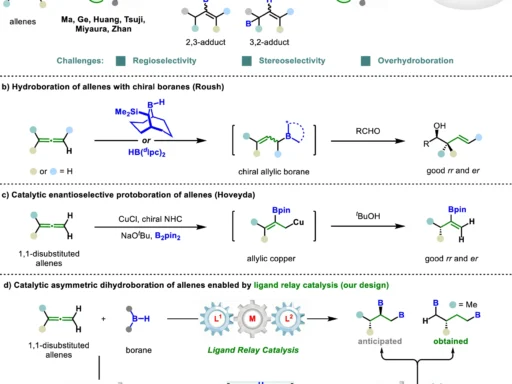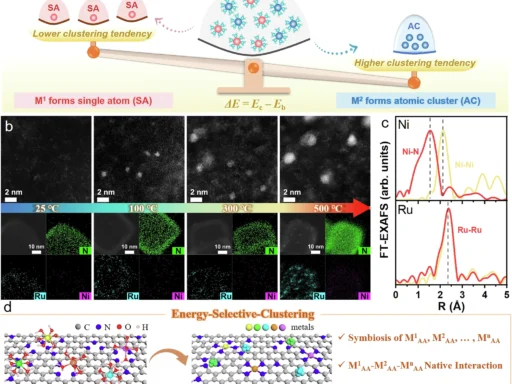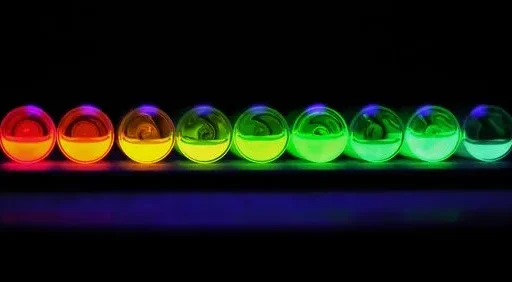Table of Contents
Within the realm of scientific technology, the pursuit of highly efficient, economically viable, and ecologically sustainable solutions consistently propels innovation. Metal-free organic radical scintillators, which are emerging as a notable breakthrough, provide high-efficiency light emission without the need for metals. What specifically distinguishes them? In this article, we shall examine the scientific aspects, advantages, difficulties, and practical uses of these captivating materials.
Abstract of Organic Scintillators:
Define Scintillators:
A scintillator is a substance that emits light when exposed to ionizing radiation. This characteristic is crucial in several applications, spanning from medical imaging to particle physics. When exposed to radiation, a scintillating substance absorbs energy and emits light, which sensors then detect.
Organic Compounds’ Role in Scintillation Technology:
Historically, scintillators have consisted of inorganic phases, frequently including metals such as cesium or lead. However, organic compounds can exhibit scintillation, offering advantages like shorter reaction times and the ability to produce various and adaptable forms such as liquids, crystals, and polymers.
Why Choose Metal-Free Products?
The expense, toxicity, and environmental impact of metal-based scintillators are considerable despite their effectiveness. Organic scintillators, particularly those devoid of metals, offer a more economical option. Metal-free organic radical scintillators provide exceptional light emission characteristics while ensuring safety for both human populations and the environment. Principle drawing of X-ray excited luminescence and exciton types for closed-shell and open-shell metal-free OXSTs

An overview of organic radical scintillators:
This is a precise definition of organic radical scintillators:
Unpaired electrons (radicals) generated during irradiation significantly influence the emission of light in organic radical scintillators, a distinct category of organic materials. The intrinsic stability of these radicals inside the organic framework enables them to effectively transform radiation into visible light.
Organic Radicals’ Light Generation Mechanism:
The presence of unpaired electrons in organic radicals results in the interaction with incident radiation, which generates excited states. When these electrons return to their lowest energy state, they emit light energy. The method’s excellent efficiency makes these materials ideal for use in scintillation detectors.
A Comparative Analysis of Conventional and Metal-Free Scintillators:
Metal-free organic radical scintillators have many notable advantages in comparison to conventional scintillators. Frequently, they exhibit reduced weight, more flexibility in shape, and improved ease of processing. Although classical scintillators may offer superior overall efficiency, organic scintillators are steadily catching up to the latest developments in molecular design.
An Investigation of Organic Radical Chemistry:
Identify organic radicals:
Organic radicals are chemical compounds that possess a minimum of one unpaired electron moiety. These radicals may exhibit either stability or reactivity, contingent upon the chemical structure in their vicinity. The presence of stable organic radicals is essential in scintillators to guarantee sustained optimal performance.
Organic radicals have distinct characteristics:
An outstanding characteristic of organic radicals is their capacity to undergo rapid electronic transitions, which makes them very sensitive to radiation interactions. This rapid reaction leads to swift scintillation, which is crucial for applications that need immediate radiation detection.
This study examines the stability and reactivity of organic radical stimuli:
A fundamental obstacle in the development of organic radical scintillators is the delicate equilibrium between stability and reactivity. Although the presence of radicals can increase light emission, it can also render the material susceptible to deterioration if not adequately stabilized. Technological progress in chemical synthesis has effectively reduced these problems. Photophysical properties and theoretical calculations of TTM-1Cz and TTM-1CzBr.
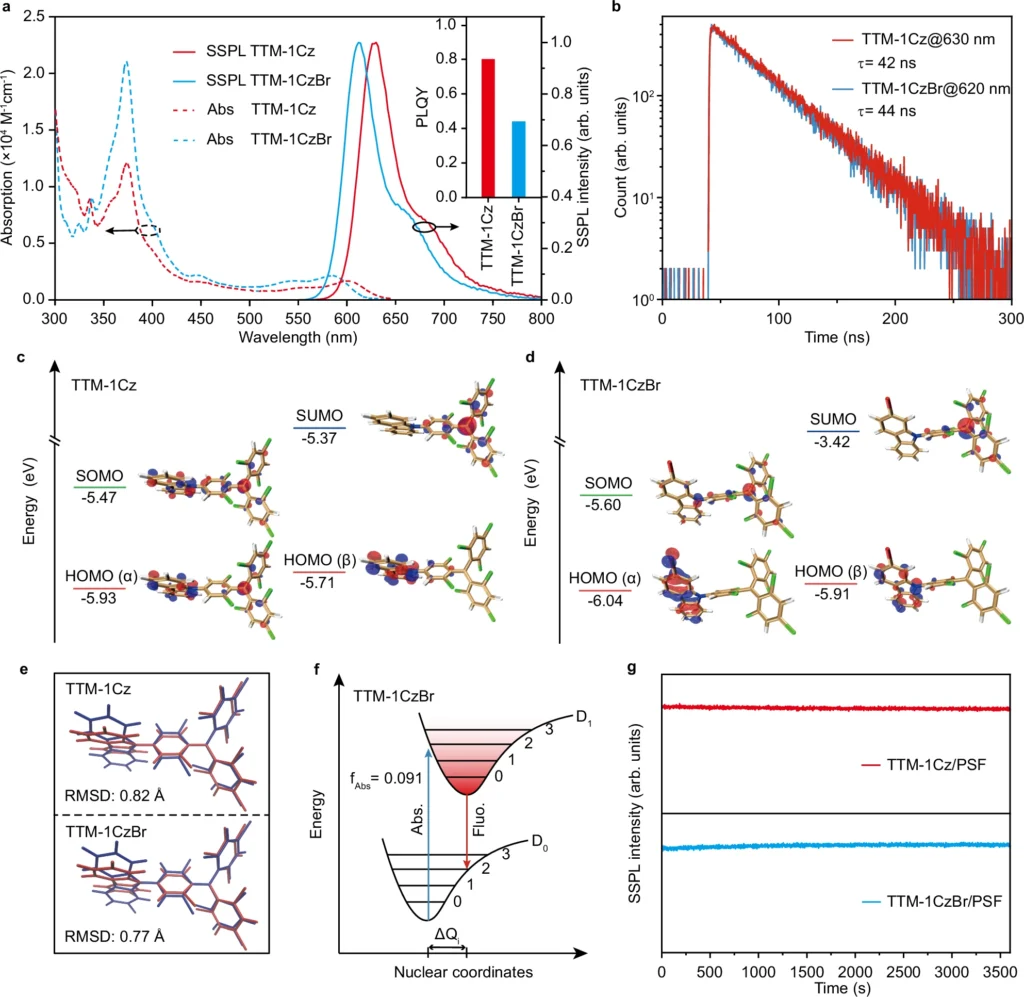
Metal-free organic radical scintillators offer several advantages:
Analysis of Environmental and Economic Advantages:
An inherent benefit of metal-free scintillators is their excellent environmental compatibility. These technologies eliminate the need for hazardous metals and mitigate the ecological consequences of their production and subsequent disposal. Moreover, the reduced expense of manufacturing organic materials makes them a financially feasible choice for several commercial sectors.
Light Optical Power and Sensitivity Optimization:
Organic radical scintillators have demonstrated significant improvements in both light emission and sensitivity. In certain applications, especially in fields such as radiation detection, where high sensitivity is of the utmost importance, this characteristic renders them highly competitive with their metal-based equivalents.
Adaptability in Design and Implementation:
Compared to inorganic crystals, organic materials offer greater versatility, allowing for precise molding into a wide range of shapes such as thin films, fibers, or liquids. The inherent flexibility of this architecture enables enhanced adaptability and introduces novel opportunities for application in intricate systems, such as wearable radiation detectors or portable imaging equipment.
Utilization of Metal-Free Organic Radical Scintillators in Scientific Imaging:
Use in Medical Imaging: Scintillators play a vital role in medical imaging, namely in PET (positron emission tomography) scans, by detecting gamma rays produced by radiotracers. Organic radical scintillators that don’t contain metals are becoming a very promising alternative. They offer faster response times and better image resolution without the problems with toxicity that come with traditional materials.
Radiological detection and surveillance:
Efficient radiation detection is of utmost importance for businesses that frequently handle radiation, such as nuclear power installations or space exploration. Organic radical scintillators provide exceptional sensitivity and are suitable for use in portable, cost-effective monitoring systems that boast both reliability and lightweight design.
Applications exist within the fields of particle physics and high-energy physics:
Scintillators with exceptional sensitivity are required for the detection of particles resulting from collisions in high-energy physics accelerators, such as CERN’s Large Hadron Collider. Furthermore, metal-free organic scintillators are gaining recognition in this field by providing enhanced detection capabilities with increased speed and precision. X-ray scintillation performance of the developed radical emitters.

Primary obstacles and constraints:
The temporal dynamics of stability and degradation:
Organic scintillators face an inherent challenge in preserving their long-term stability. Persistent exposure to radiation, heat, and UV light can gradually deteriorate the material, therefore diminishing its effectiveness. To address these challenges, scientists are currently developing more resilient organic structures.
Reactivity to Exogenous Variables:
Organic scintillators exhibit more sensitivity to environmental variables in comparison to their inorganic equivalents. Heat, moisture, and ultraviolet (UV) exposure can influence the performance of these materials, thereby restricting their applicability in specific challenging conditions.
Achieving a balance between efficiency and durability:
Current research is focused on maintaining high light output efficiency in metal-free organic scintillators for extended periods without degradation. The primary objective of scientists is to develop materials that exhibit enhanced durability and maintain their exceptional performance even after prolonged usage.
The latest developments in organic radical scintillators are impressive:
Advancements in Efficiency and Performance:
Recent developments in the structural design of organic radical scintillators have greatly enhanced their efficiency. Scientists have successfully enhanced the light-producing capacity by meticulously adjusting the molecular configuration, which is now comparable to that of conventional scintillators.
Advancements in Synthesis and Material Design Technologies:
Emerging synthetic techniques have been critical to the development of organic radical scintillators. Advancements in polymer chemistry and nanotechnology are facilitating the development of materials that exhibit enhanced efficiency and simplified large-scale produceability.
A Prospective Analysis of Metal-Free Scintillators:
Continual research is broadening the possible uses for metal-free organic radical scintillators. These groundbreaking materials appear promising in the realm of smart radiation detectors and sophisticated medical imaging equipment, the prospects for these groundbreaking materials appear promising.
A Comparative Analysis of Light Output and Efficiency in Metal-Based Scintillators:
Light Output and Efficiency: Although metal-based scintillators still boast superior light production, the disparity is rapidly diminishing. Organic radical scintillators are becoming more competitive because of improved material design and synthesis methods, resulting in increased efficiency.
Environmental Factors to Consider:
The presence of hazardous components in metal-based scintillators renders them less ecologically benign. Organic radical scintillators, by comparison, provide a more environmentally friendly alternative, with fewer concerns about pollution and toxicity in their manufacturing and disposal processes.
Production Costs and Resource Availability:
Production of metal-based scintillators can be costly, especially for those that rely on scarce or hazardous componentry. Organic scintillators, due to their simplicity and affordability in synthesis, provide a more readily available and economically efficient option for certain industries. X-ray imaging applications of TTM-1CzBr.
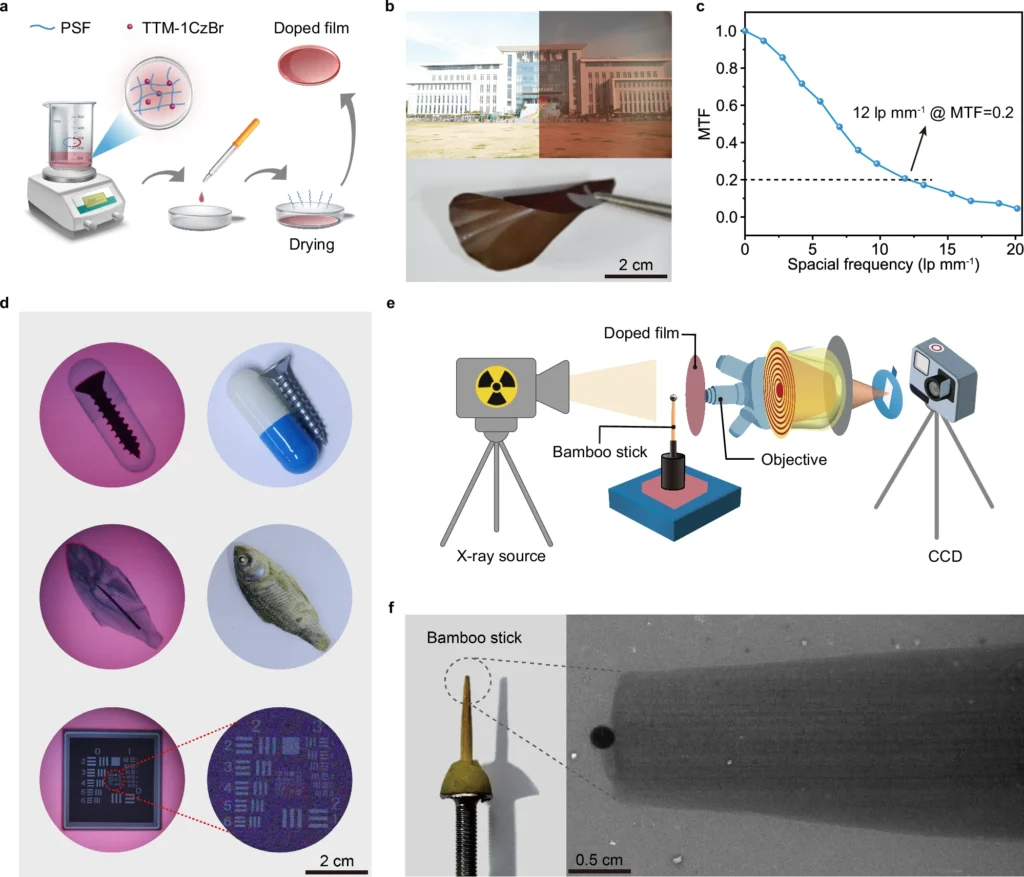
Exploring Future Paths and Advancements:
Exploration of Hybrid Organic Systems:
An area that warrants further investigation is the advancement of hybrid systems that integrate both organic and inorganic constituents. Such an approach would enable researchers to exploit the advantages of both materials, hence developing scintillators that exhibit enhanced efficiency and versatility.
Advances in Radiation Detection Technology:
The development of novel organic scintillators will be critical in meeting the growing demand for radiation detectors that are both highly sensitive and easily transportable. Technological progress in wearable and flexible detection systems has the potential to completely transform sectors such as healthcare, defense, and environmental monitoring.
Broadening the scope of applications in various domains:
The adaptability and effectiveness of organic radical scintillators allow them to be used in domains beyond conventional radiation detection. The potential for smart cities and environmental sensing is immense.
In conclusion:
Organic radical scintillators that don’t contain metals are helping to create a new class of highly effective, environmentally friendly, and cost-effective scintillation materials. With ongoing research enhancing their stability, light emission, and wear resistance, these materials are poised to assume a pivotal role in areas such as medical imaging, radiation detection, and particle physics. Undoubtedly, metal-free organic radical scintillators will have a substantial impact on the promising future of scintillation technology.
Frequently Asked Questions:
1). What is the primary benefit of using semiconductor scintillators instead of metal?
Their main advantage lies in their ecological friendliness. Metal-free scintillators circumvent the toxicity and expense associated with metal-based materials, enhancing their safety and sustainability profiles.
2). We analyzed to compare the performance of organic radical scintillators with conventional ones.
Although conventional scintillators historically had higher starting efficiency, organic radical scintillators are now gaining ground by providing faster response times and increased design flexibility.
3). Are organic scintillators appropriate for use in harsh ambient conditions?
Organic scintillators exhibit higher sensitivity to environmental elements such as heat and UV radiation. However, continuous research endeavors to enhance their resilience for application in more challenging environments.
4). Are metal-free scintillators viable in the business sector?
Indeed, the economic viability of these scintillators is increasing due to breakthroughs in synthesis that reduce manufacturing costs, establishing them as a competitive substitute for metal-based scintillators.
5). Which are the primary obstacles that researchers are striving to address?
Researchers’ primary goal is to improve organic scintillators’ stability and longevity while preserving their high efficiency and sensitivity for extended periods of operation.
For more chemistry blogs, visit chemistry Master



